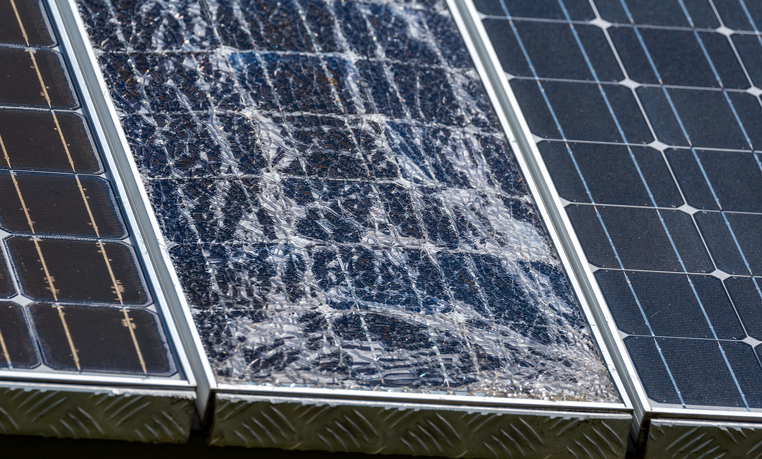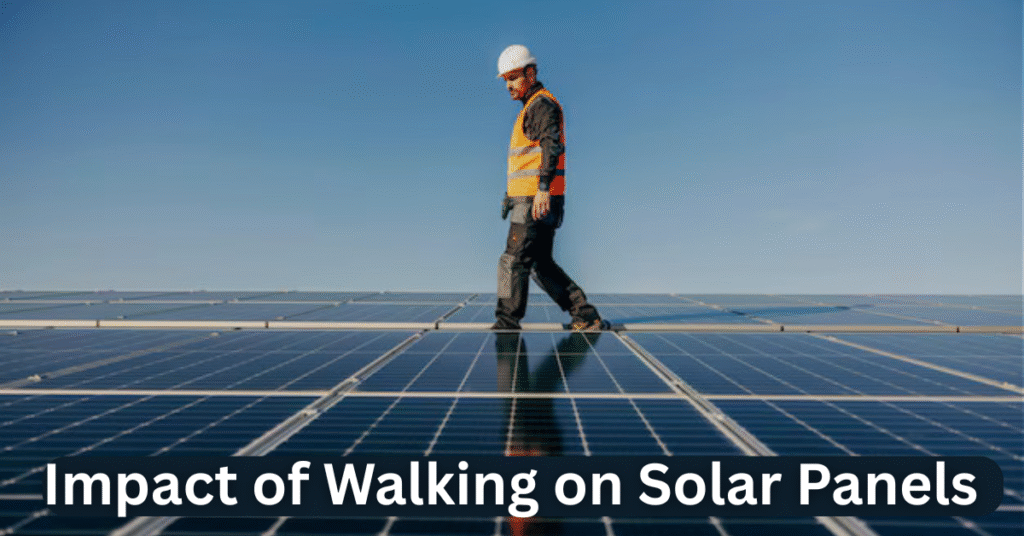Walking on solar panels is a topic many homeowners and installers ask about — and with good reason. It may seem harmless, but even a single step can introduce micro‑cracks or structural stress that compromise panel performance and void warranties. Let’s unpack why this matters, how it affects global efficiency & what safer alternatives exist.

Why Walking on Solar Panels Is Risky
Micro‑fractures & cell damage: Research shows that even small pressure from walking can cause invisible micro‑cracks in silicon cells, leading to a measurable drop in power output (around 4 % initially, compounding over time)
Structural harm and frame stress: Panels aren’t designed to bear uneven human weight, which can crack glass or damage connection points and mounts
Performance decline: Mechanical stress from walking can degrade efficiency, and electrical connections may loosen or fail
Warranty voiding: Most manufacturer warranties explicitly disallow walking on modules — any damage from weight applied this way can void coverage
Safety hazards: Slips, falls and even electrical shock risks make walking on panels a liability both for people and system longevity

Best Practice Guide (Professional & Homeowner Safe Steps)
Safe Maintenance Without Walking:
- Use telescopic cleaning tools (soft brush + warm water) for dust and dirt removal.
- Schedule if rain is insufficient — especially in dusty or high‑soiling regions
- Turn off the system before cleaning to avoid shading or thermal stress
When Professionals Must Access Panels:
- Use designated walkboards or catwalks adjacent to arrays, never on the modules themselves.
- Step only on the mounting frame if absolutely necessary.
- Wear non‑slip footwear and use fall‑protection gear.
- Professionals often distribute weight carefully to avoid focal pressure
Effects on Energy Output & Longevity
Efficiency decline: Even minor cell cracks from occasional stepping reduce performance over time.
Long‑term degradation: Cracks introduced by walking tend to worsen, accelerating panel lifespan wear ‑ particularly under daily temperature cycling
System‑wide effects: A damaged panel can drag down overall array performance if not isolated or optimized with power optimizers/micro‑inverters
FAQ’s
1.Can walking on solar panels permanently damage them?
Yes. Even if damage isn’t immediately visible, micro‑fractures can reduce power efficiency and propagate over time, shortening panel life.
2.Is it possible to repair that damage?
Usually not. Visible scratches might be polished, but micro‑cracks inside cells require panel replacement.
3.How much weight can solar panels handle?
They’re built to support snow or wind loads evenly distributed—but concentrated human weight, especially on glass areas, often exceeds safe limits
4.Are there solar panels designed to be walked on?
A few industrial designs exist, but typical residential or commercial PV modules are NOT walk‑rated. Always check manufacturer documentation for permissions.
5.What should I do instead of walking on panels for cleaning or inspection?
Use telescopic brushes, drones, or hire trained technicians who use walkways or step only on frames.
Conclusion:
Walking on solar panels is strongly discouraged: it risks micro‑crack damage, reduced efficiency, warranty voids, and personal injury. Instead, adopt safer cleaning practices, use proper access platforms, and trust qualified professionals.

